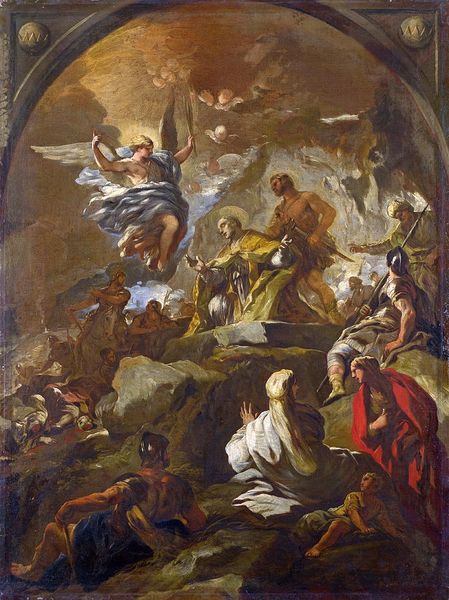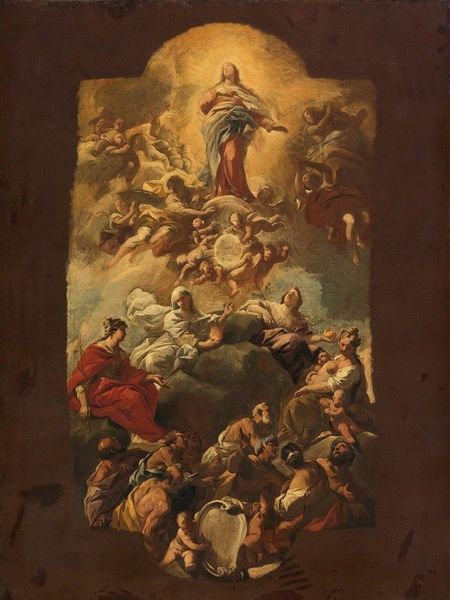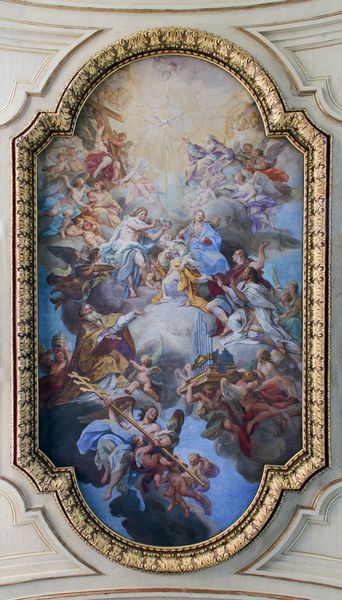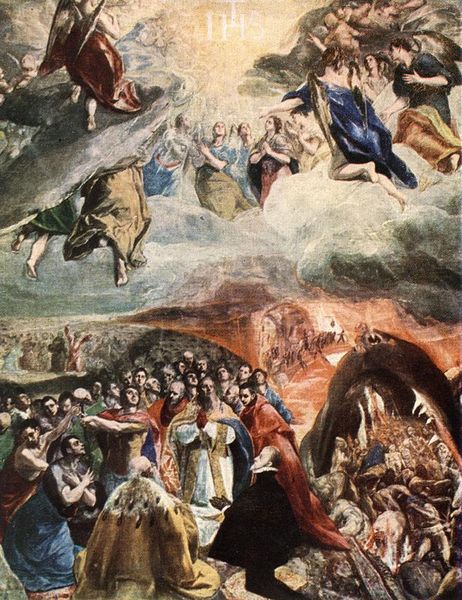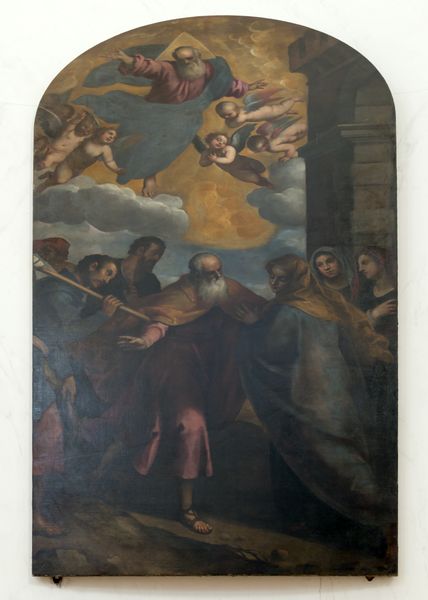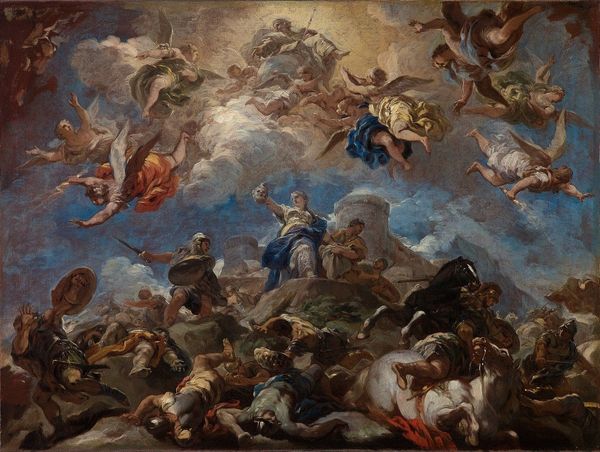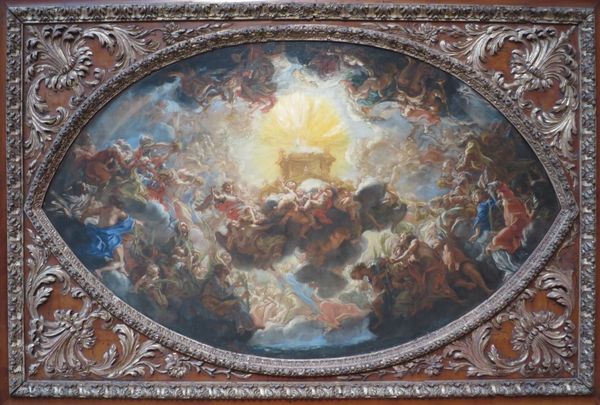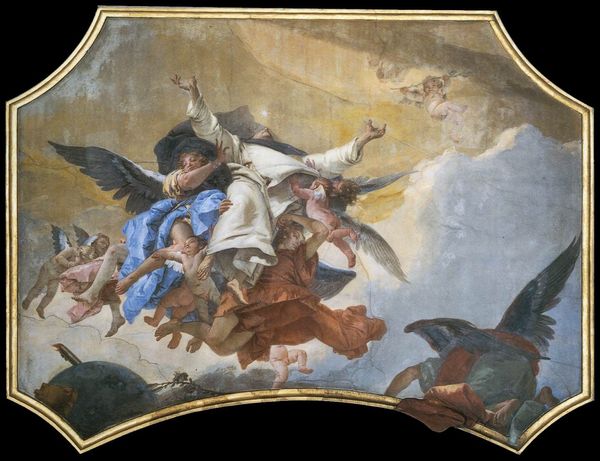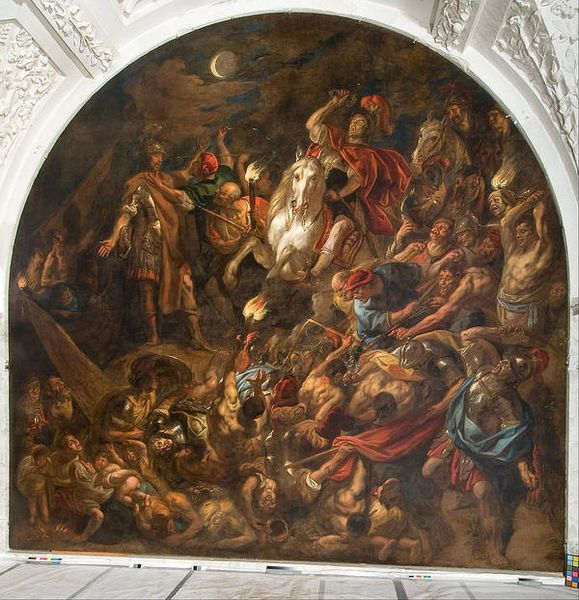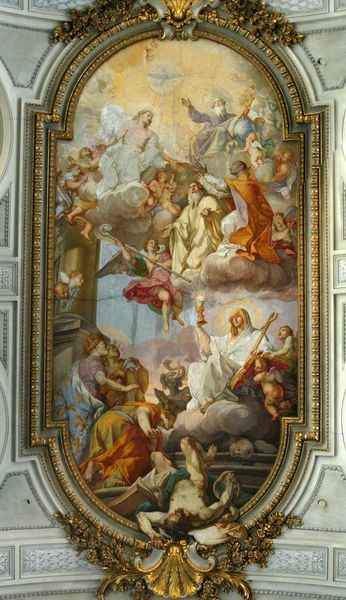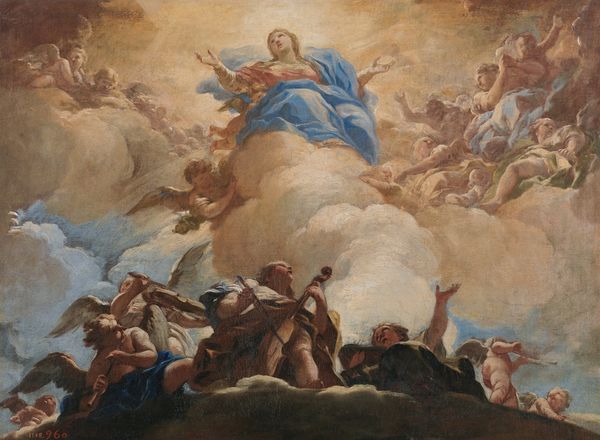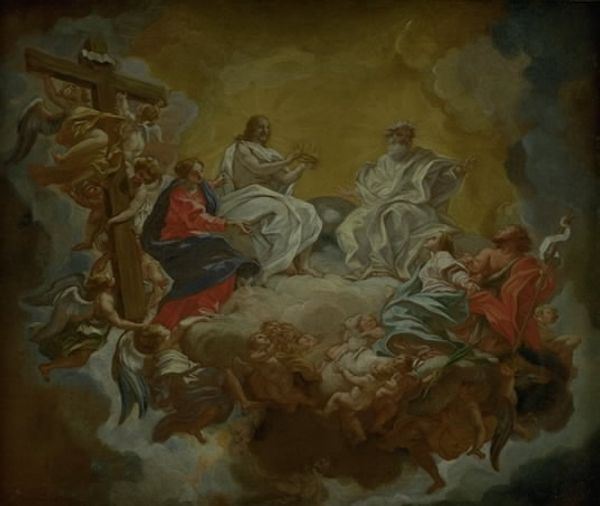
painting, oil-paint
#
allegory
#
baroque
#
painting
#
oil-paint
#
figuration
#
oil painting
#
history-painting
Copyright: Public domain
Curator: Oh my, what a flurry of figures caught in upward motion. The dynamism is overwhelming at first glance. Editor: Indeed. We are looking at "Assunzione della Vergine", attributed to Palma il Giovane. This oil painting showcases the Assumption of the Virgin Mary. Curator: The swirling clouds act as a visual mechanism, pulling the eye upwards. Notice the artist's deft handling of light and shadow to create this sense of soaring drama, consistent with the Baroque aesthetic. The color palette is restrained, but the dynamism inherent within that restrained use of pigment serves as an essential element. Editor: It’s also interesting to consider the role that a painting like this might have played. Imagine it placed above an altar, for example, reinforcing the church's message during the Counter-Reformation. Art became a powerful tool to communicate spiritual dogma at a time of social change. The viewer would’ve experienced the religious iconography through a politicized lens of hierarchy and authority. Curator: Precisely. And the structural parallels! See how the figures are arranged into a pyramidal composition, echoing earlier Renaissance masterpieces, while simultaneously employing the intense theatricality of the Baroque. This establishes an almost allegorical ladder. Editor: To understand its meaning, we must ask, "Who was this art for?". The sheer scale suggests public display; the painting may well have played a pivotal role within an evolving social and political landscape to solidify church power structures through narrative depictions of hallowed biblical episodes. Curator: This historical reading allows the viewer access beyond the sheer compositional excellence of Palma il Giovane’s formal execution, as one now gains some access to the original intended, receptive cultural understanding, rather than simply aesthetic appeal and its relationship to later visual motifs. Editor: Viewing this oil painting becomes far more potent if one understands its historical context, prompting contemplation regarding faith, influence, and the enduring relevance of cultural artifacts. Curator: Absolutely. Through close visual inspection and an application of formal structural theory we can more acutely appreciate artistic achievement, if also acknowledge what exactly an artist hoped, via pictorial form, to inculcate as belief.
Comments
No comments
Be the first to comment and join the conversation on the ultimate creative platform.

